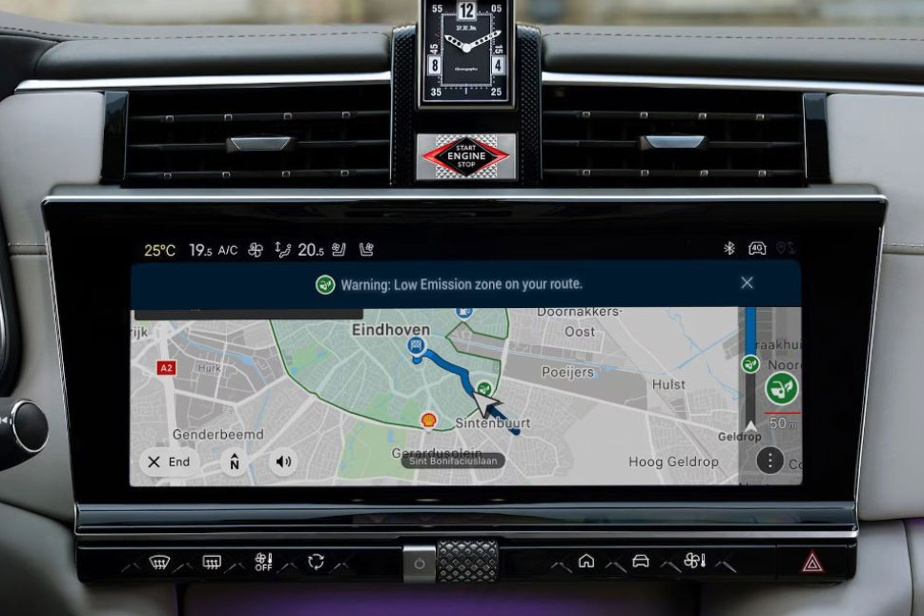It is always useful to take a look at what is developing in Europe since, often, technological innovations in the automotive industry abound there and then cross the ocean to reach the practice of drivers here in North America.
These days, we can look at the French car manufacturer DS Automobiles to detect a practice that could well be part of our lives in a few years. And I name geofencing (the technology is also called geofencing or geoactivation, depending on your point of view).
DS Automobiles has in fact decided to integrate this technology into its models equipped with rechargeable hybrid engines, models which are increasingly popular on the European market.
Geo what?
Geofencing is a function that allows you to remotely track the position and movement of a vehicle. The tool allows you to locate it, but above all, it allows you to see if the position of the vehicle deviates from certain values that are set in advance.
This practice should not, however, be confused with intrinsic geolocation, which consists of locating an object on a map, when you have lost a smartphone and want to locate it, for example.
Now, what the French car manufacturer is proposing is to take this tool and give it an additional function to allow drivers to improve their journey while respecting the environment. Yes, yes, while respecting the environment. Explanation…
Discovering the ZFE
Across Europe, low-emission zones, known as LEZs, have been identified. These zones, generally located in urban areas, aim to limit access to the most polluting vehicles by introducing certain restrictions. This means that access to these zones will be reserved for the least polluting vehicles.
Eventually, one can easily imagine that entire areas could be banned from petrol cars, especially since to date, Europe is aiming for 2035 to eliminate all thermal cars from its territory.
But hey, the future will tell us if this will actually happen.
In any case, ZFEs are multiplying in recent years in Europe. In France, they are already found in Paris, Aix-Marseille, Lyon, Toulouse, Clermont-Ferrand, Rouen, Grenoble, Reims and Saint-Étienne. But it also seems that around thirty other localities would like to join this group. And beyond France, on European territory, around ten countries are also proposing restrictions of this type.
Currently, ZFEs are found mainly in Europe and Asia, but their implementation is also planned, if not under consideration, in other parts of the world, including Canada. And this is where geofencing comes into play…
Don’t get too close…
The process starts if the vehicle’s battery contains enough energy, at least. But if it does, electric mode is automatically selected, thus reducing its environmental impact during a trip, for example.
ZFEs can also be easily found on a connected GPS, where they are displayed in green and are accompanied by an icon.
The French firm has integrated geofencing into three models of plug-in hybrid vehicles, three models whose sales represented between 40% and 90% of its total sales in Europe last year.
That said, DS Automobiles has also thought of others. The firm has announced that its petrol and diesel models, among others, also have a georeferencing service that alerts drivers to the presence of low-emission zones and suggests an alternative route. Still.
Technology in technology
For the more savvy, you should know that the connected navigation update, included in the Connect Plus package, is the origin of the geofencing service.
However, this package also includes the ChatGPT function, which is integrated with IRIS voice recognition. Depending on the model, the driver will be able to use a remote control, the connected alarm or a trip planner to make their trips. In Europe, this package is offered on all DS Automobiles models for a period of three years.
In short, it seems that Europeans are preparing for a new era. However, for the moment, no measures have yet been taken to strictly impose electric vehicles in ZFE. It may come. Just as this technology may soon be part of the lives of North American drivers. We will have to watch!
